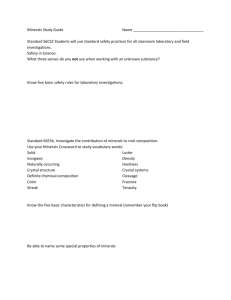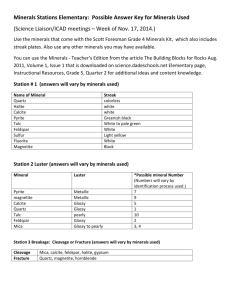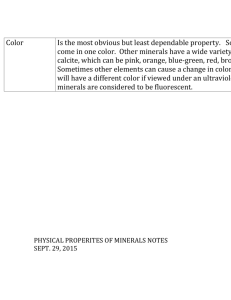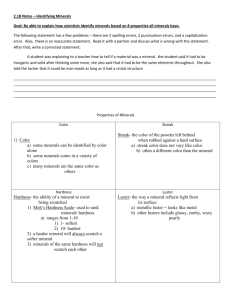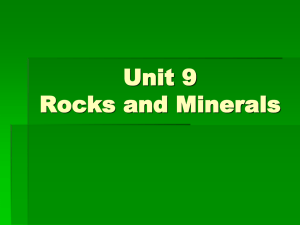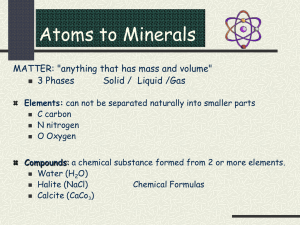Answer Key for Minerals Study Guide
advertisement
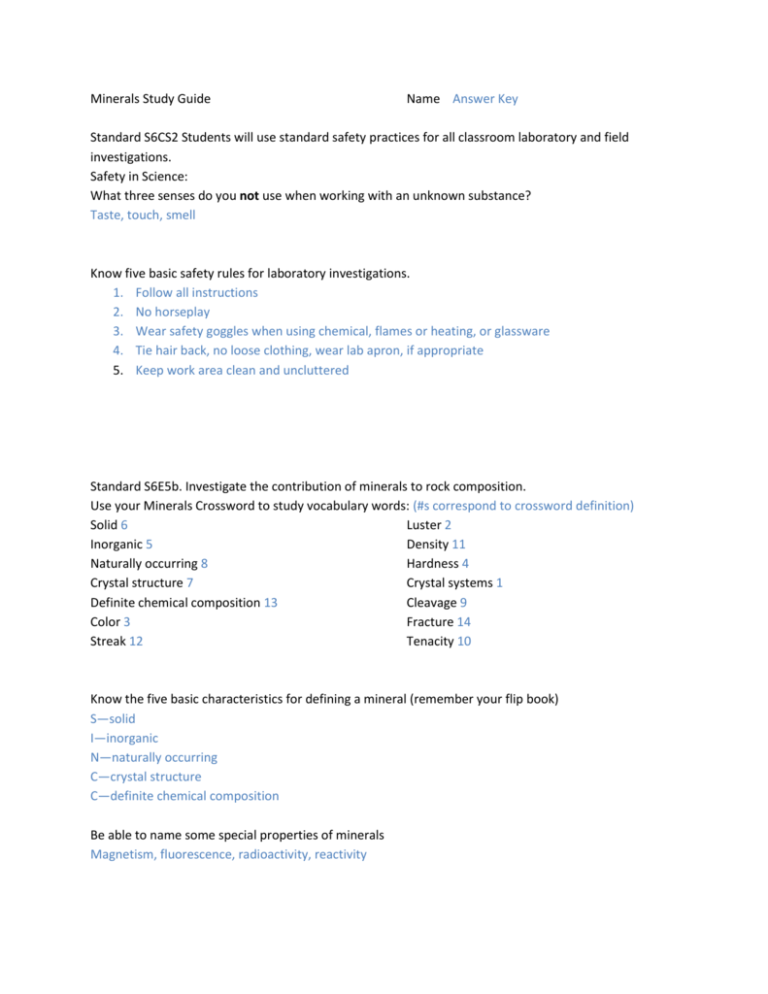
Minerals Study Guide Name Answer Key Standard S6CS2 Students will use standard safety practices for all classroom laboratory and field investigations. Safety in Science: What three senses do you not use when working with an unknown substance? Taste, touch, smell Know five basic safety rules for laboratory investigations. 1. Follow all instructions 2. No horseplay 3. Wear safety goggles when using chemical, flames or heating, or glassware 4. Tie hair back, no loose clothing, wear lab apron, if appropriate 5. Keep work area clean and uncluttered Standard S6E5b. Investigate the contribution of minerals to rock composition. Use your Minerals Crossword to study vocabulary words: (#s correspond to crossword definition) Solid 6 Luster 2 Inorganic 5 Density 11 Naturally occurring 8 Hardness 4 Crystal structure 7 Crystal systems 1 Definite chemical composition 13 Cleavage 9 Color 3 Fracture 14 Streak 12 Tenacity 10 Know the five basic characteristics for defining a mineral (remember your flip book) S—solid I—inorganic N—naturally occurring C—crystal structure C—definite chemical composition Be able to name some special properties of minerals Magnetism, fluorescence, radioactivity, reactivity Be able to identify a mineral based on its properties: Mineral Color Streak Pyrite Gold Silver Yellow Yellow Silver Galena Quartz Lead gray White, colorless, other colors Light green, yellow, purple Colorless, white Colorless Fluorite Calcite Halite Luster Hardness Density (g/cm3) Greenish Yellow Silver to light gray Lead gray White Metallic Metallic Metallic 6-6.5 2.5-3 2.5-3 5.0 19.3 10.0 Metallic Glassy 2.5 7 7.4 2.6 Colorless Glassy 4 3.0 White to grayish White Glassy 3 2.7 Glassy 2.5 2.1 -How is gold different from pyrite? Pyrite has a greenish streak; gold’s streak is yellow. Pyrite is harder than gold. Gold is denser than pyrite. -What tests could you use to tell the difference between gold and pyrite? Streak test is simpler and most practical; pyrite would scratch gold since pyrite is harder. You could also measure mass and volume and calculate density. -Of the metallic minerals given, which is the densest? Metallic describes luster so locate the four metallic minerals according to their luster. Look at the density column—gold has the largest density. -Which of the glassy minerals given could scratch all of the others? Glassy describes luster so locate the four glassy minerals according to their luster. The ability to scratch is a property of hardness. Look at the hardness column—quartz is the hardest of all four glassy minerals. -You find a glassy mineral that is light green. You think it may be fluorite, but you know that quartz is one of the most abundant minerals and can be found in different colors. How could you tell which mineral? Compare quartz and fluorite in the chart. If the mineral is fluorite, its streak will be colorless; if it is quartz, its streak will be white. You could also check hardness. A steel knife would scratch fluorite but would not scratch quartz.
